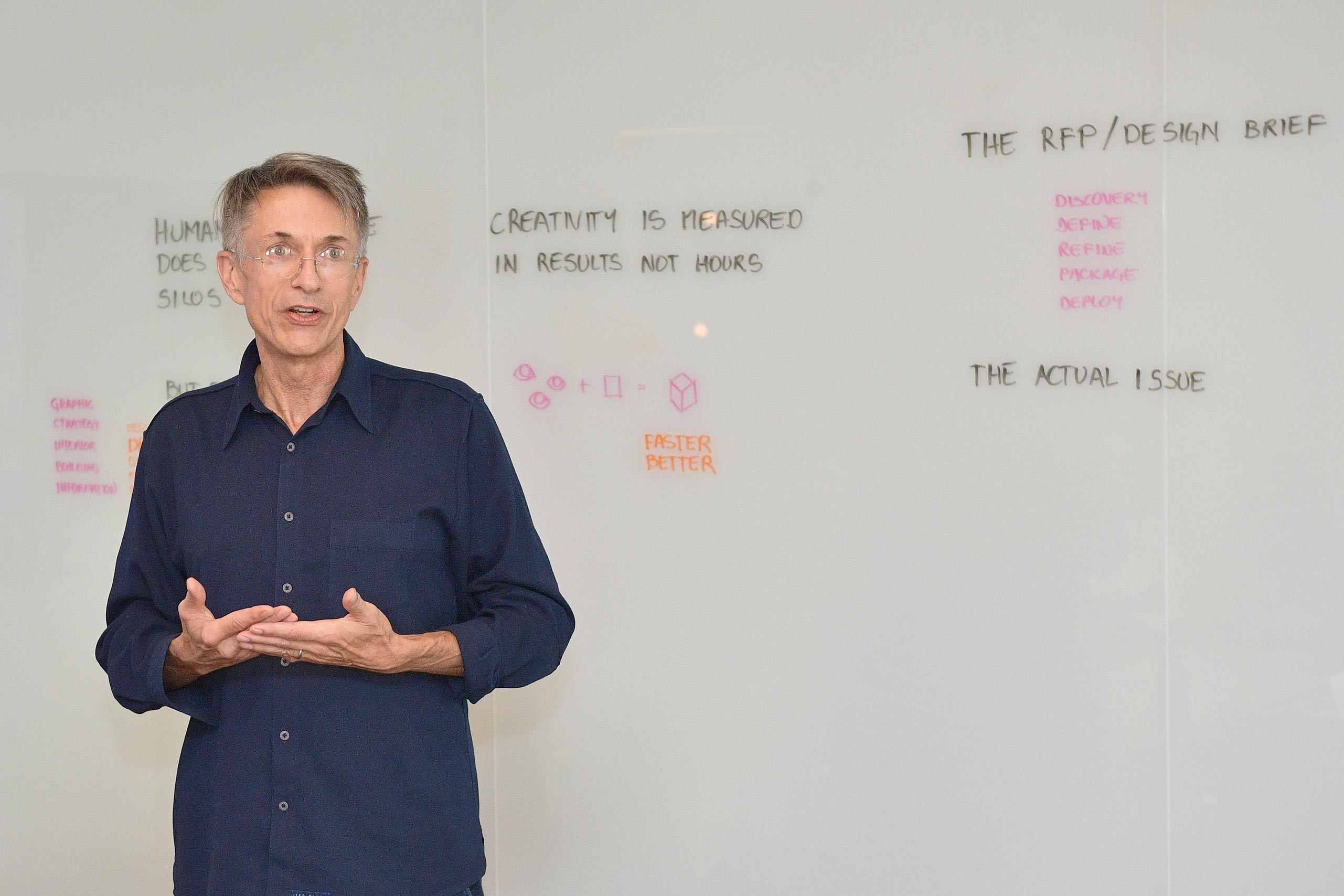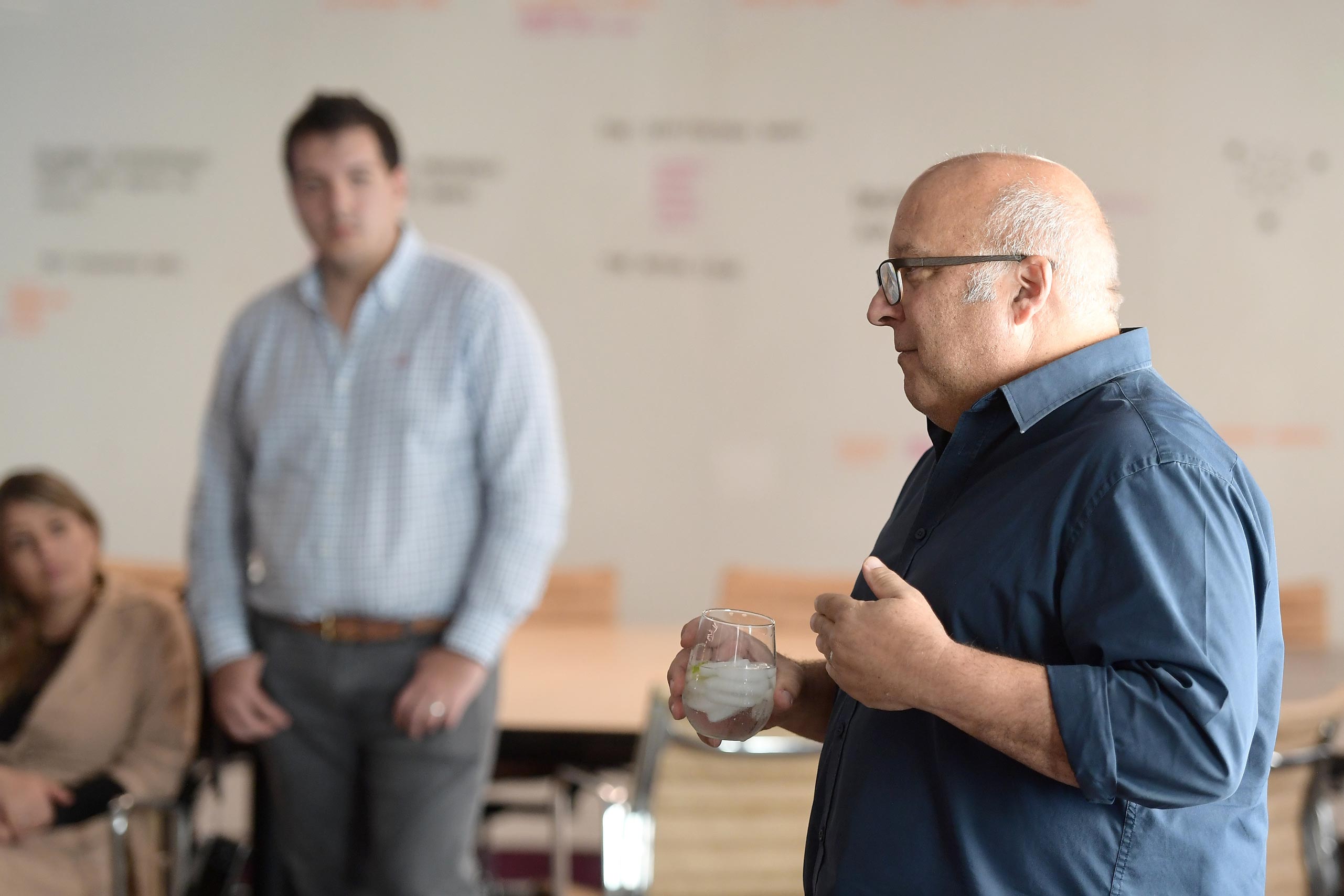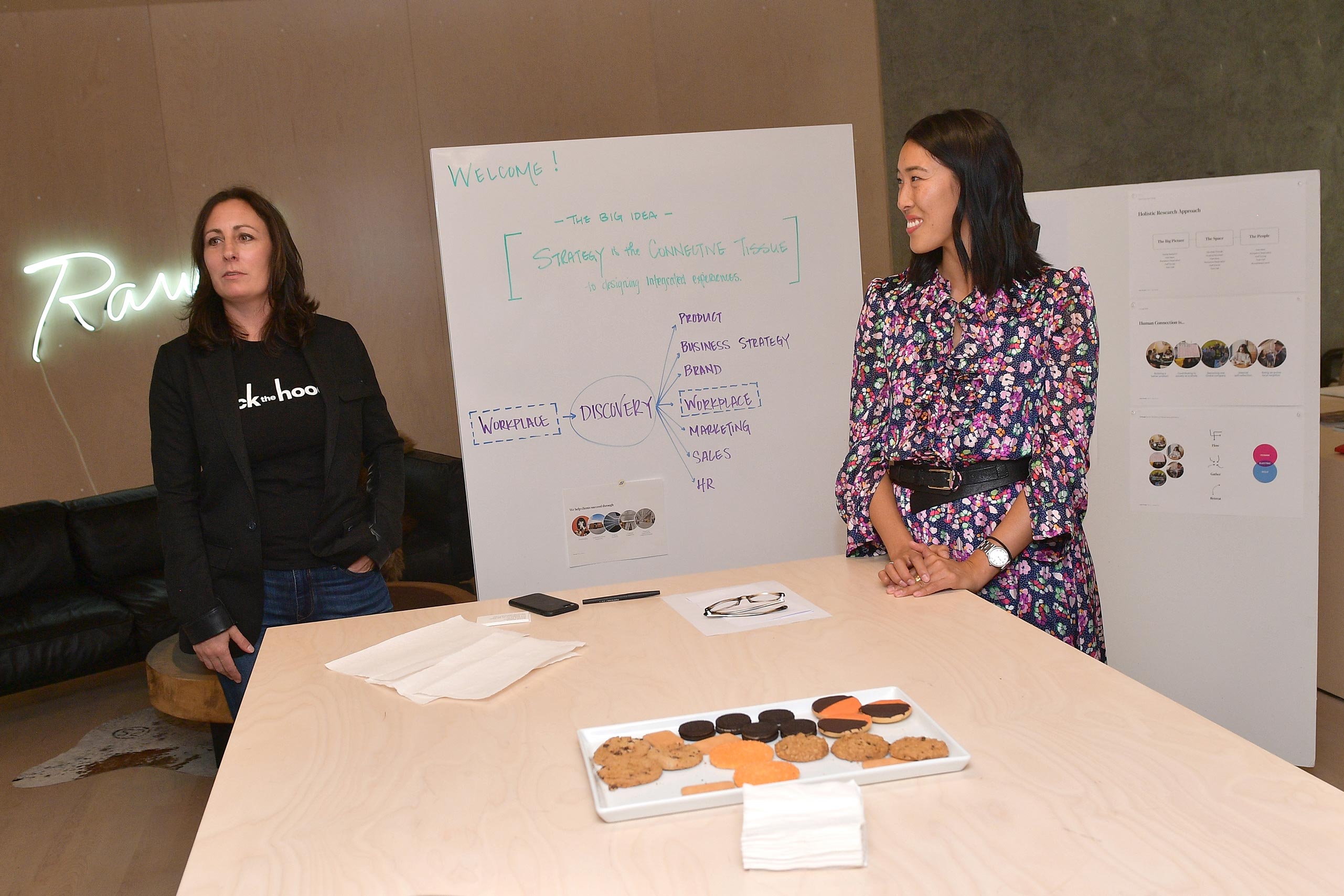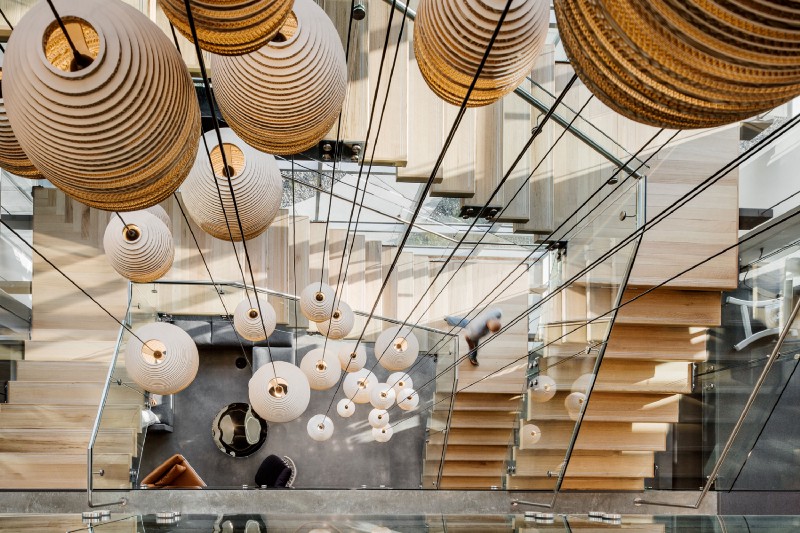
“We used the morning to share our approach to branding and workplace strategy,” says Account Director Rachel Newell, “and what makes it unique.”
Key takeaways? “To be successful in this day and age, brands must be able to be fully experienced,” says Newell. “That’s why Rapt takes a holistic approach to designing them. We know that continued engagement is spurred by meaningful, connected experiences that can be fully felt.”
While Newell and Senior Strategist Michelle Lee talked strategy in the age of connected, integrated brands, our Creative and Account Director Louis Schump highlighted our agile approach — which tends to be more common in software design than space design. At the other end of the studio, Design Director Daniel Epperson took visitors through a few current projects that recruit the talent of graphic designers, interior designers, and architects alike.
“The spaces we design are always informed by the company’s mission, values, and purpose — which drive a company’s culture,” adds Newell. “Our branding work always takes those things into account.”
Visitors left the studio with not just a more comprehensive understanding of what we at Rapt do each day, but also — and even more importantly — with a sense that design, strategy, branding, and space can all connect to create really meaningful experiences.



Image credit: Matt Winkelmeyer/Getty Images for WIRED.
